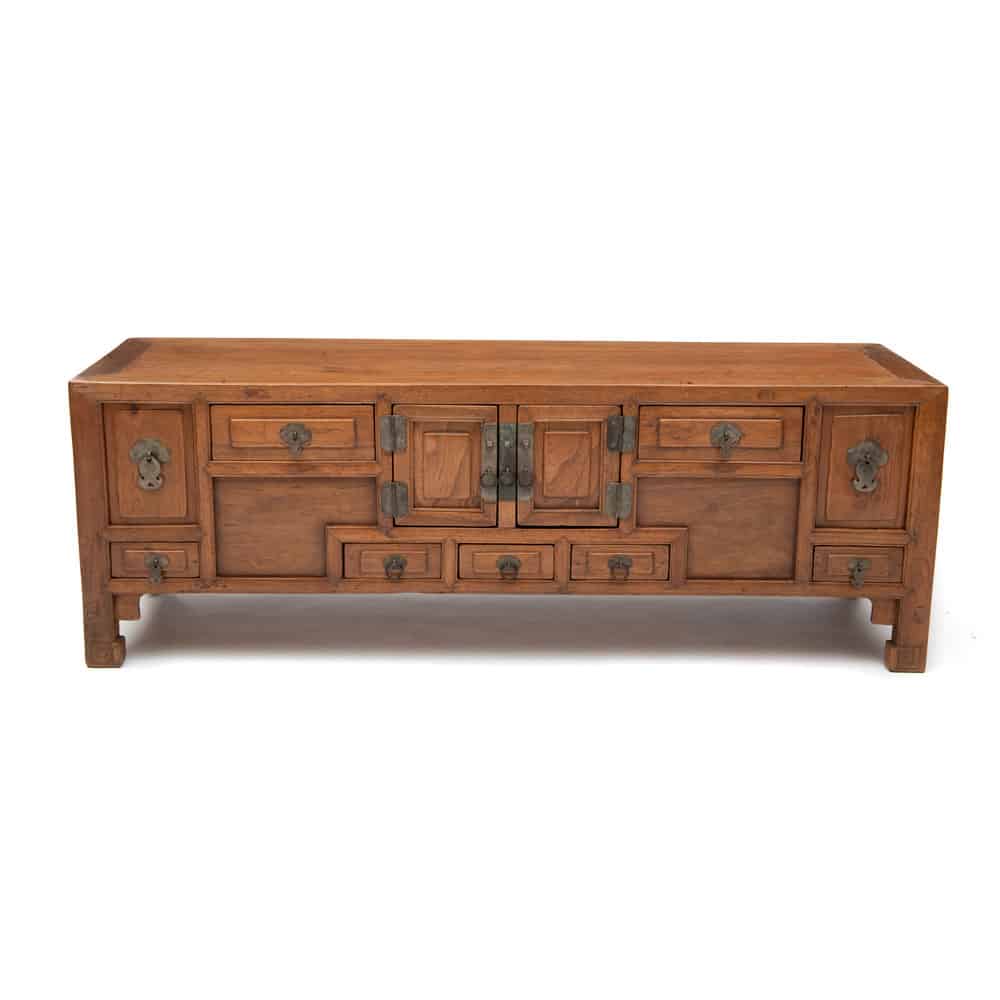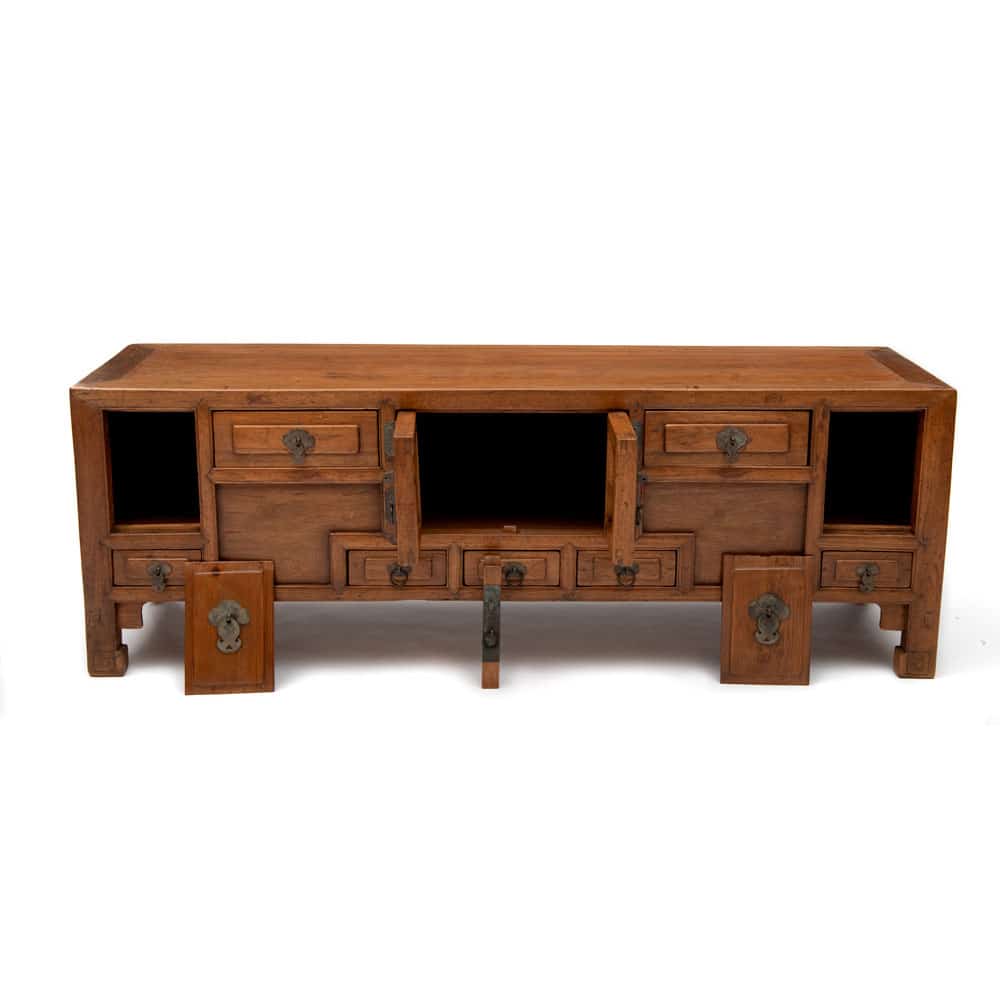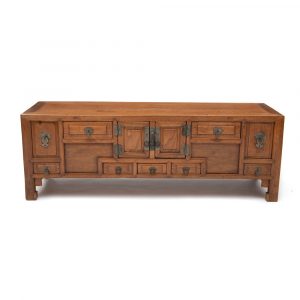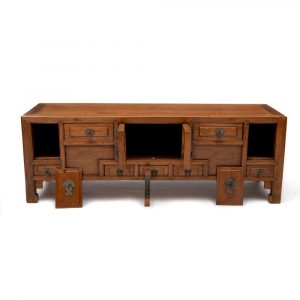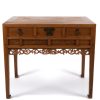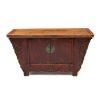Seven drawer two compartment low cabinet
$4,250.00
Late 19th century
- Chinese cedar and spruce
- 140cm W x 40cm D x 50cm H
Wonderfully designed and constructed cabinet. Seven drawers is very unusual in these cabinets. The two end compartments have panels that lift up to access the space. The two blind panels have hidden storage available by taking out the drawer above.

